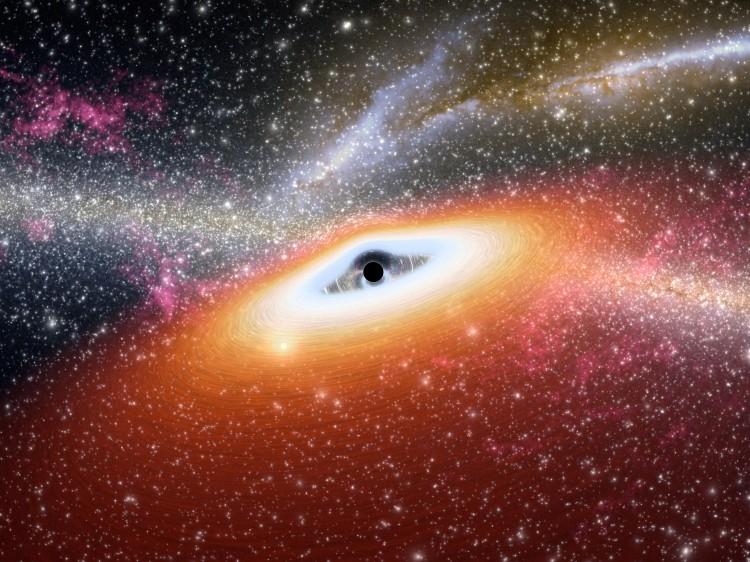The mystery of why star-forming hydrogen gas is undetectable in the farthest regions of the universe may have been solved by Australian astronomers.
Their new model shows how intense ultra-violet radiation emitted from supermassive black holes as they suck in matter can ionize all the surrounding gas, even in the largest galaxies.
“Previously, we had not known just how much of the gas was ionized by the black hole accretions disks—we had thought that perhaps it was just enough to take the abundance of cool gas to below the detection threshold of current radio telescopes,” said study co-author Stephen Curran at the University of Sydney in a press release.
“So we'd thought that it was maybe a telescope sensitivity issue.”
Once ionized, the hydrogen cannot be detected using normal methods. Also, in this excited state, the gas cannot collapse to form stars.
“In order to probe further back in time, we choose the most distant radio sources,” Curran explained. “What appears as faint light from these, to us on Earth, is actually extreme ultra-violet, dimmed and stretched (redshifted) to visible light on its several-billion-year journey to us.”
“Unfortunately, these are the only objects we know of at the very limits of the cosmos and within these the radiation from the central black hole is so intense as to heat all the gas to the point where it cannot form stars.”
This explains why hydrogen is invisible in the older regions of the universe, where astronomers expect abundant gas was present before it was absorbed during star formation.
“We have shown that rather than being a telescope sensitivity issue, all of the billions of suns worth of gas is indeed ionized,” Curran concluded.
The findings were published in The Astrophysical Journal on Nov. 10.
The Epoch Times publishes in 35 countries and in 19 languages. Subscribe to our e-newsletter.





